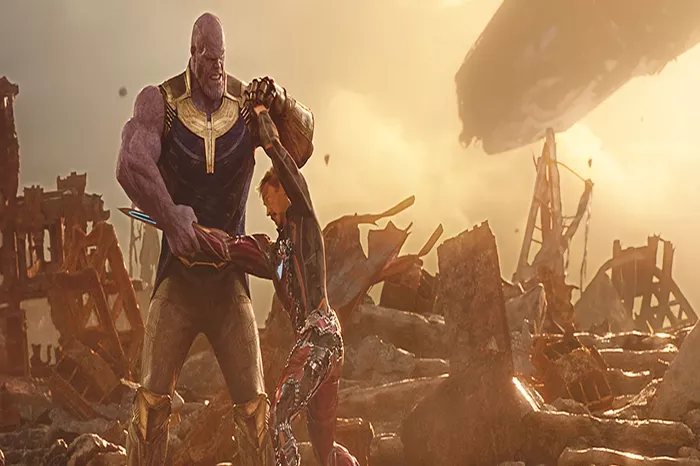Hollywood’s superhero movie industry has taken a significant turn towards using more practical effects and real sets, responding to long-standing criticism from fans and critics alike. Marvel and DC, the two giants of the genre, are leading this charge with their upcoming films.
A Shift Towards Practicality
For over two decades, Marvel and DC have dominated the film industry, transforming comic book adaptations into cultural phenomena. Their movies are known for their interconnected storytelling, ambitious scope, and groundbreaking visual effects. As the box office numbers soared, so did the budgets, pushing the boundaries of what visual effects could achieve.
However, despite the unrelenting popularity of superhero films, there has been a growing sentiment among audiences and critics that the genre relies too heavily on CGI. As of 2024, the Marvel Cinematic Universe (MCU) has numerous projects in development, while James Gunn’s DC Universe (DCU) is gearing up with its “Gods and Monsters” chapter, consisting of at least twelve movies and TV shows. Alongside these, Sony’s Spider-Man Universe and DC’s Elseworlds projects continue to expand. Amid this bustling landscape, a notable shift towards practical effects is emerging.
Superman and Deadpool & Wolverine: A Return to Practical Effects
Recent set photos and footage from the upcoming films “Deadpool & Wolverine” and “Superman” reveal a significant use of practical effects. In “Deadpool & Wolverine,” photos show Ryan Reynolds and Hugh Jackman in full costume, performing fight scenes on a snow-covered set. The official trailers confirm that these scenes retain their practical effects, showcasing a commitment to realism. Similarly, footage from the “Superman” set displays extensive use of real buildings, environmental damage, cars, and extras, promising a visually grounded film.
The decision to use fully practical costumes is a welcome surprise. While CGI might enhance certain elements like Wolverine’s suit or animate Deadpool’s eyes, the actors wore real costumes during filming. David Corenswet’s Superman suit, complete with an actual cape, is another testament to this practical approach. This move away from CGI capes, which are often added in post-production for efficiency, marks a return to the tangible realism of practical effects.
The Necessity of Practical Effects in Superhero Films
Despite the advancements in CGI over the past twenty years, some details remain difficult to recreate digitally. Subtle imperfections in materials, design, movement, and weight distribution are challenging to replicate with CGI. Practical effects, which require meticulous planning and cannot be easily altered last minute, contribute to a sense of realism that enhances performances. This realism is evident in early superhero films, where practical effects like Iron Man’s Mark 3 armor and Tobey Maguire’s Spider-Man suit still resonate with audiences.
Locations, while easier to recreate with VFX, benefit from practical sets that allow actors to interact with their environment naturally. Practical sets provide a clear understanding of the characters’ surroundings and behaviors, something green screens and even advanced tools like The Volume cannot fully replicate.
The Enduring Appeal of Practical Effects
Many practical effects from early superhero movies still hold up today. Tim Burton and Joel Schumacher’s Batman sets, as well as the practical effects in Sam Raimi’s Spider-Man films, continue to impress with their realistic qualities. In contrast, some modern CGI-heavy scenes lack the same tangible authenticity.
Even though characters like Thanos and Hulk showcase the exceptional capabilities of CGI, practical makeup and effects, such as Kelsey Grammer’s Beast in “X-Men: The Last Stand” or Colin Farrell’s Penguin in “The Batman,” remain unparalleled in their realism.
Balancing Digital and Practical Effects
As CGI continues to advance, it complements practical effects rather than replacing them entirely. This balance can enhance practical elements like capes and Iron Man suits with details that are otherwise impossible to achieve. Films like “Guardians of the Galaxy Vol. 3,” which broke records for prosthetic makeup usage, demonstrate the potential of combining both approaches.
However, modern superhero films have sometimes overused CGI for simple effects, such as regular guns and rooms. An all-CGI approach may be easier during pre-production and more flexible in post-production, but the enduring appeal of practical effects suggests a more balanced method is preferable.
The upcoming “Deadpool & Wolverine” and “Superman” films indicate that the genre is moving towards such a balance. Despite the increasing scope of superhero movies, there remains ample space for practical effects, which enrich the viewing experience with their authenticity. As Marvel and DC continue to push the boundaries of the genre, they are also embracing the timeless value of practical effects, ensuring their stories remain grounded in a tangible reality.
Related topics:
MARVEL’S “AGATHA ALL ALONG” PROMISES MIX OF HORROR IN SPINOFF SERIES
MARVEL CAST JOINS FORCES TO DUB “THE AVENGERS” IN LAKOTA LANGUAGE
MARVEL’S STRATEGIC UNIVERSE EXPANSION CONTINUES UNABATED

